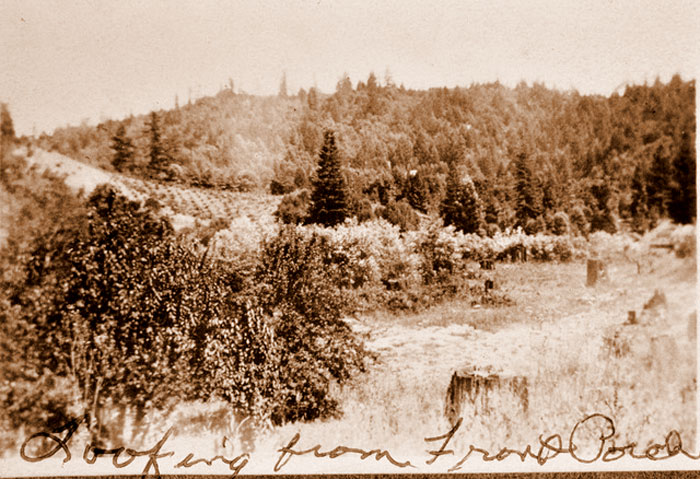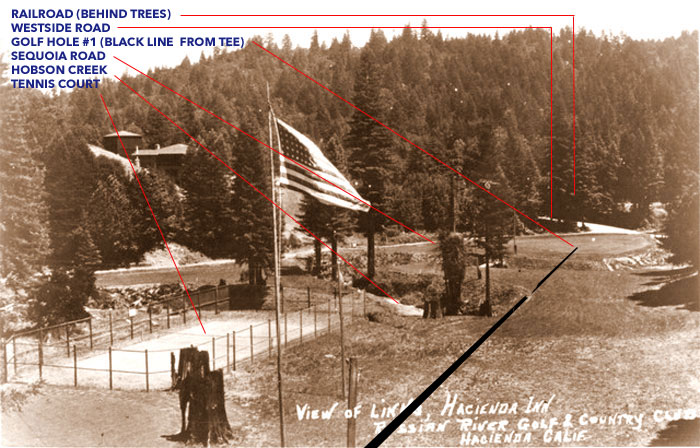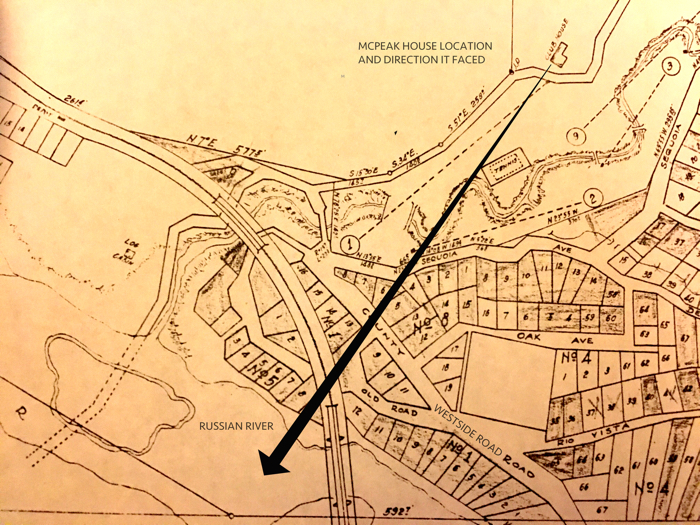Hacienda, Russian River, Sonoma, California
COSMO FARM
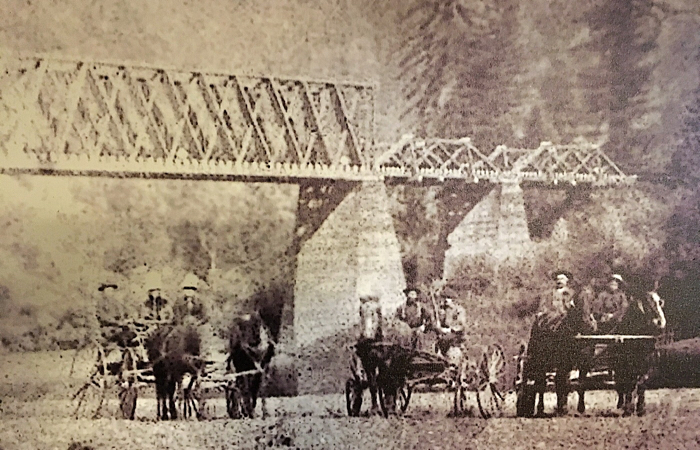
Horse and buggies getting ready to ford the river at Cosmo on their way to Forestville.
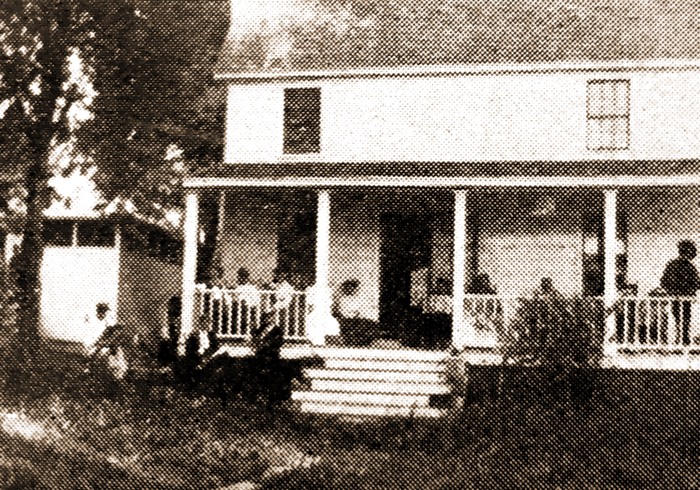
The McPeak farm house at Cosmo Farm. The dining room can be seen at the left.
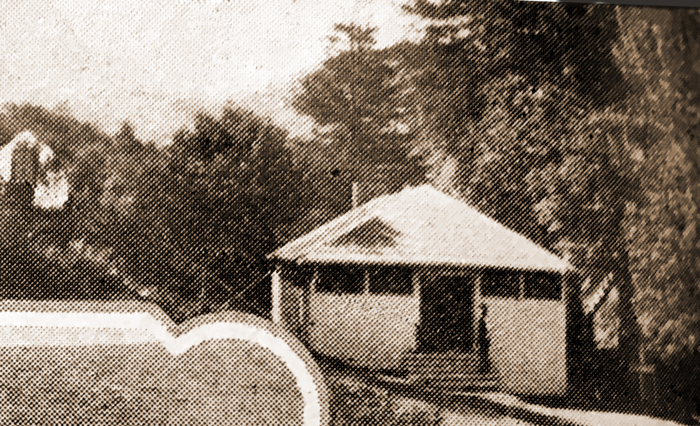
The Cosmo Farm dining room could feed up to 70 guests.
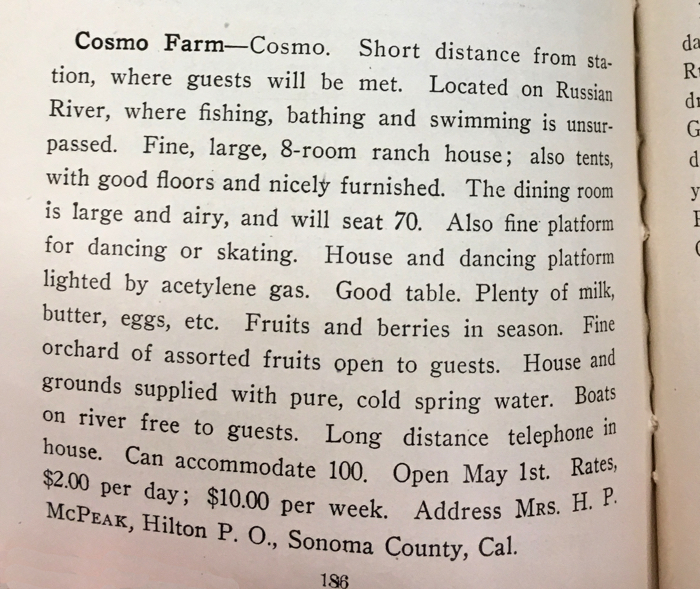
The description from a 1909 publication from Northwest Pacific Railroad to encourage tourism.

June 21, 1910
Dear Lucy,
We are enjoying every minute in the country. Cosmo is a very pretty place, many pretty walks.
We are about to take one now.
With love,
Anneta
Dear Lucy,
We are enjoying every minute in the country. Cosmo is a very pretty place, many pretty walks.
We are about to take one now.
With love,
Anneta
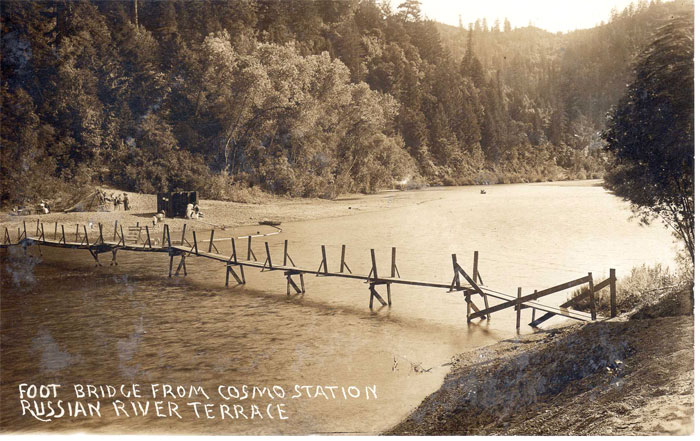
The foot bridge at the shallow crossing stretched from Cosmo to Russian River Terrace. The Cosmo Station was built in 1911, so this photo would have been taken between 1911 and 1926 when Cosmo Farm became Haciendas del Rio. Thanks to Tim Magee for the photo.
The Korbel and other mills were producing lumber faster than they could move it out of their isolated locations. In 1875, the Korbel brothers and some of the other lumber mill owners went to Peter Donahue, president of the SF&NP (San Francisco & North Pacific) railroad, with an idea that Donahue build a spur line from Fulton to Guerneville. They worked out a plan where the mill owners would get the land owners to agree to a free right of way. The mill owners would also have to provide the timbers to build the bridges. Anthony McPeak was one of the land owners. The plan would bring the train to Cosmo Farm with the Russian River bridge's western end landing on his property and Cosmo would be the first station on that side of the river. This was obviously good news for Cosmo Farm. No longer would the river be a barrier to people living in the south who wanted to stay at Cosmo Farm.

The giant trees were difficult to remove so the trains ran very close to the redwoods making for a dramatic ride.
About 450 men started laying the track, more than half of them Chinese. The bridge at Cosmo required building two wooden piers, each containing 70,000 feet of lumber. The metal part of the bridge was assembled in Petaluma and then dismantled and brought by railroad to the site. The length of the span was 181 feet and it was 50 feet above the water. A 1,300 foot long trestle connected the shore to the pier on the eastern side of the river. A train, a construction train, crossed to Cosmo Farm for the first time in May of 1876.
Other than tree stumps 10 to 20 feet in diameter being in the way and the need to blast a path across the face of Cape Horn, the track laying went smoothly for the next two miles to Korbel Mills. There everything came to a halt when mill owners stopped giving the railroad timbers for the next 2.75 miles of tracks needing to be laid to Guerneville. The railroad had apparently used far more lumber than anticipated. A station was built at Korbel Mills and added to that was a hotel, school, store, boardinghouse and cabins. Perhaps most importantly, the first post office in the area was certified. A year later, 1877, the train was finally built all the way to Guerneville.
The sight of giant trees that the railroad barely slid through amazed visitors so going to the river became unexpectedly popular. Cosmo Farm, now called simply "Cosmo" due to the train stop listing, was booming.
To stay at Cosmo cost $2 a day or $10 and up a week. That would be about $240 in 2017 adjusted for inflation. That included free fruit and boat usage.
The farming continued too. The Healdsburg newspaper in 1889 printed about a hops picking party at the McPeak's ranch.
Now that the hops in the different fields are being gathered in and mention of the same is being made in your paper, the undersigned take this opportunity to write you of our “picking picnic” in the fields of A.
McPeak, on the river bank near Guerneville. There are excellent camping grounds located between the fields with a spring of water pure and cold. There were a number of tents on the ground, and on evenings the campers would gather around a fire and make music, vocal and instrumental, and when tired of music there were games of all kinds, all of which proved to be very enjoyable. There were about seventy persons employed, but owing to the smallness of the kiln we were not allowed to pick over six hours a day, but as the hops were unusually good and the price for picking a cent and a quarter, we made pretty fair wages. I must mention one little girl in particular, a child of nine years, picked 103 pounds in six hours.The last hops were picked Wednesday, the picking lasting twelve days, and Wednesday night a social dance was given at a house near by on Mr. McPeak's place. Many of the campers and a number of their friends were present and the dance proved to be a very enjoyable affair. Messrs.
McPeak & Kamsy, for whom we picked, with their many acts of kindness added greatly to our comfort and pleasure, so much so, that we are looking forward to great times from the picking next yearThe train's arrival was also good for a community a mile toward Korbel Mills on the Ridenhour Ranch. A clay deposit had been discovered and that had created a small operation for making bricks. The train coming in meant that bricks could be shipped in large numbers. Louis Ridenhour arranged for a stop on his ranch. Originally calling it "Pottery," he changed it to Hilton after his son, Hilton Baker Ridenhour, who was born in 1868.
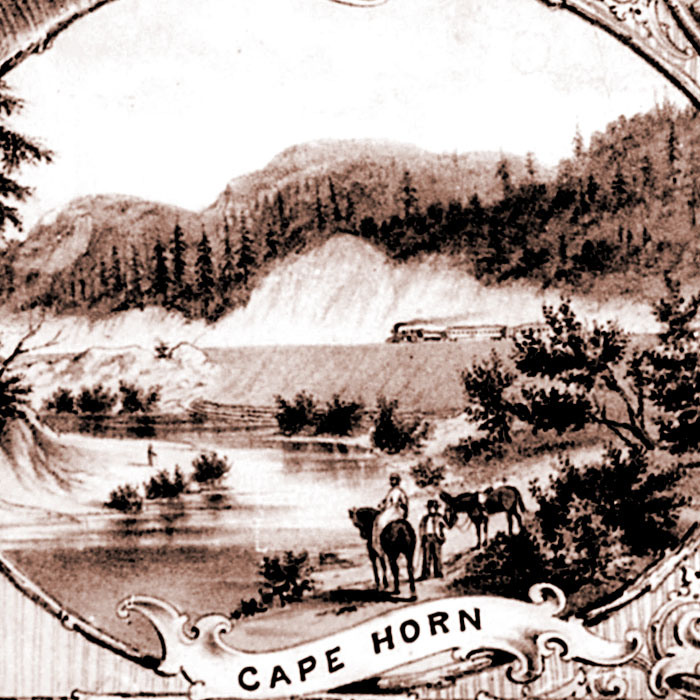
Rock slides were a constant problem at Cape Horn.
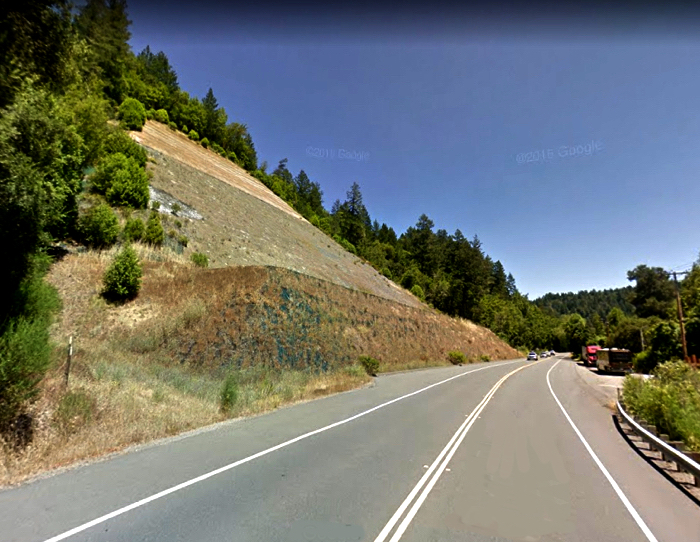
In 1878 the area got a taste of Russian River's tendency to flood. Bridges washed out, Cape Horn was too damaged for trains to operate, and some low areas were flooded. A year later a slide at Cape Horn dropped 2000 cubic feet of hillside on the tracks and the train to Guerneville couldn't operate for a week. These were winter occurrences and didn't affect the operations at Cosmo.
In general, the train opened up the redwoods and river to the public. What had been a complicated undertaking became a simple joyous trip. Whereas Cosmo had been connected to Healdsburg as a source of supplies, now Santa Rosa was within easy reach via Fulton, Mirabel Park, Dell, Forest Hills and the dramatic rivers bridge at Cosmo.
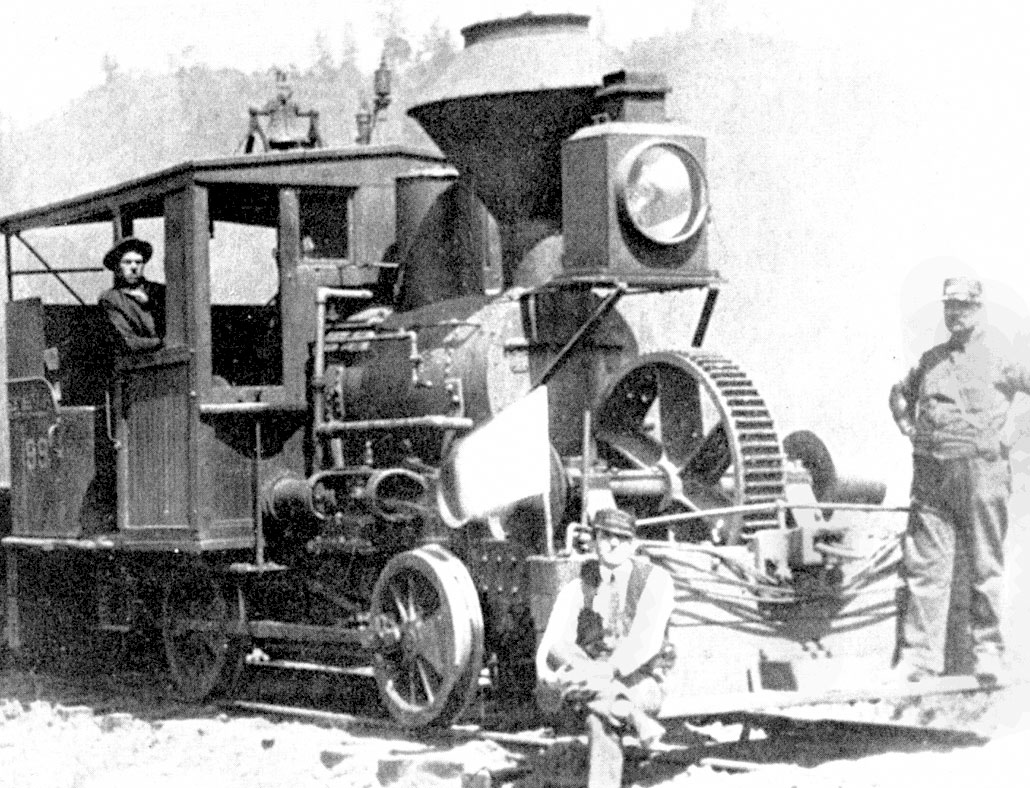
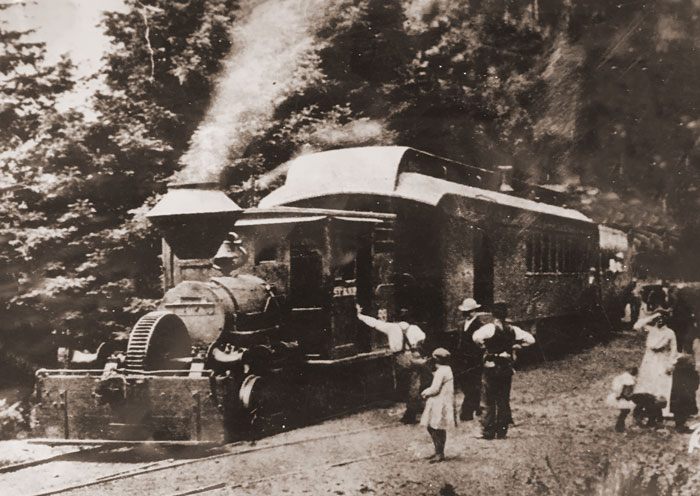
The most popular engine on the route was known as the "coffee grinder" due to the additional engine mounted on the front.
A Post Office opened in 1894 in Hilton and the community grew as more workers were employed by the brick works. In 1907 the Hilton Brickworks was officially announced as they responded to the need for brick for rebuilding post-earthquake San Francisco.
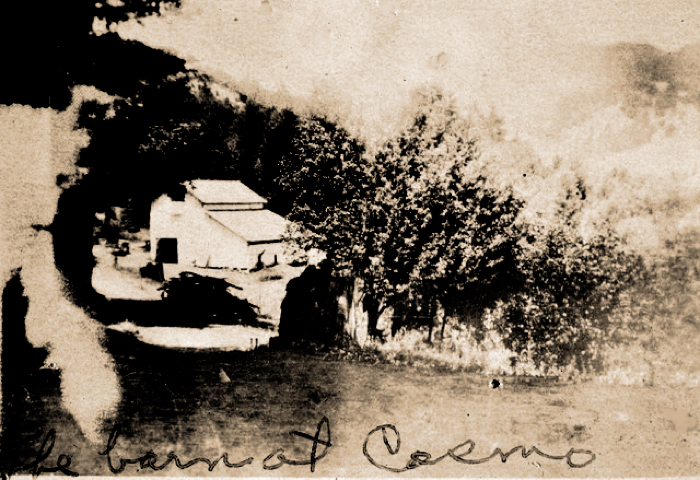
Possibly, this is looking west down Westside Road.
Anthony started dividing up his property as he got older to pass to his children who were now of the age to become independent. The resort area was reduced to about 185 acres.
A bridge was built over the Russian River in 1898 at Wall's Springs on Westside Road about a mile and a half north-east of Cosmo. That allowed better access to Cosmo from Forestville since it crossed approximately where Green Valley Creek is today. That bridge, often battered by winter floods, was made redundant by the Wohler Bridge in 1922.
The 1906 earthquake not only meant bricks were needed, the demand for lumber rose dramatically, as did the interest in escaping the city. The resorts all along the river became more popular than ever. The mills were making money, the railroad was making money and life was good in Cosmo.
Anthony had turned the operation of the resort over to his children. In particular, Minnie (now Mrs. A.F. Meisner) and Henry McPeak’s wife, Mrs. H.P. McPeak.
Anthony McPeak celebrated his 75 birthday in 1911 with a party at his Cosmo home. Also in 1911, Cosmo finally got an actual train station. A simple shelter, but at least people no longer had to stand in bad weather to wait for the train. The station was where the bus stop is now at the west end of Hobson Bridge. The McPeak offspring modernized the resort with electricity and one of the largest outdoor dancing pavilions on the river.
Anthony’s wife, Mellisa E. Bell passed the following year at age 64. She was buried in the McPeak Cemetery.
Anthony spent hours sitting on the beach watching the construction of a new river bridge at Cosmo in 1914, a metal and concrete beauty with a rare camelback truss. He could think back to when he was but a teenager swimming at this very spot. Anthony thought the two concrete piers that would support the new bridge incredibly beautiful. He could see the future standing there. A new world.
Seven years later, 1919, Anthony Peak died at the age of 83 at the home of his daughter, Minnie Meisner. He was buried next to his wife in the McPeak Cemetery.
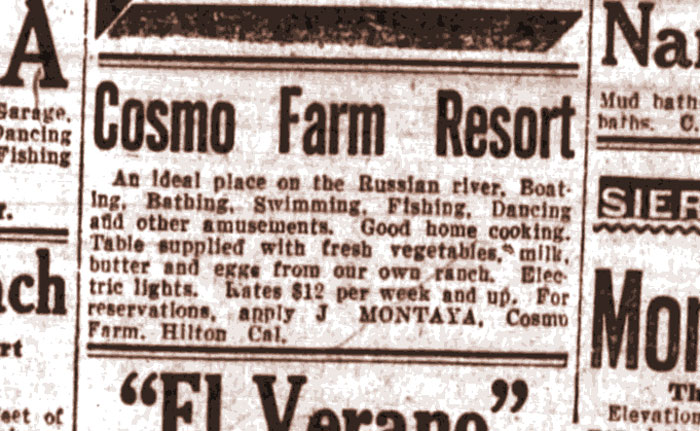
The location of the McPeak home can be pretty well established by these three images:
- The first is a photograph of the view from the McPeak front porch.
- The second is the view from the Hacienda Inn, which nearly matches the view from the front porch.
- The third is a close up of the Hacienda del Rio survey map showing the position of the Hacienda Inn and tennis court. An arrow shows direction the house faced.
So the McPeak house sat where Skippy's / Hacienda Inn used to be.
Workers tearing down the old Hacienda Inn building in 2017 said that they were surprised to discover at the heart of Skippy's construction was an old house. The old house had newspapers stuffed in the walls for insulation. The newspapers were from the 1800's. Apparently, the McPeak home has been there all along.
